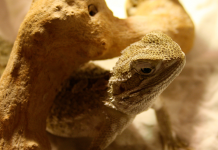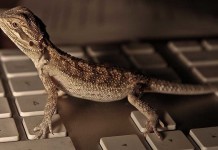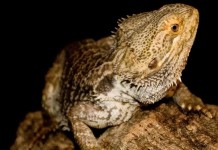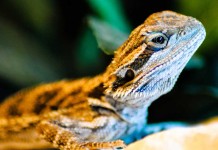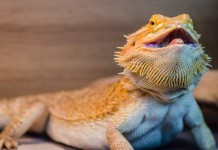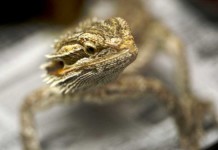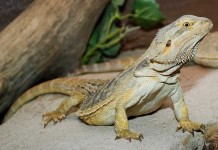In the wild, bearded dragons are found in the rugged outback of Australia. They can be easily found almost everywhere in Australia; however there are different species of bearded dragons scattering all over the different parts of the Australian continent.
The natural habitats of bearded dragons in the nature are arid, rocky, semi-desert regions, or arid open woodlands. These are the natural places they like to climb and perch around these places, such as trunk, trees or on top of rocky outcroppings. Bearded dragons are quite semi-arboreal reptile, sometimes you may even see them perch at housing areas. It might be somewhere in the garden of somebody’s housing. This is why people call them perching bearded dragon.
If you notice, one of the noticeable characteristics of bearded dragon is the perching style. In the wild, it shows the dominance of them, the higher the perching location, the more dominance of this bearded dragon in their community.
Bearded dragons might be aggressive in fighting for their territory in the natural habitat, especially for male dragons. A high perching bearded dragon always show “this is my area, do not come close and challenge me!” type of language. This happen in captivity as well, if you house your bearded dragons together, please makes sure there is sufficient room for them to move around and have their own territory.
Perching and basking under the sun is the favorite daytime activity of bearded dragons. They are diurnal reptile, active in daytime. They need the high temperature to raise and warm up their body. In the early evening, they are found on high temperature rocks because the rocks are still hot and they need to the warmed surface.
Even bearded dragons like to bask under the sun for high temperature, they shall shade themselves if it’s too hot for them. The warming up and cooling down of the body temperature is the behavioral thermo-regulation of bearded dragons. You can apply this to your housing vivarium and set up a proper thermal heat gradient for your reptile pet as this is actually important to them.
During the winter season, you can hardly see bearded dragons because they are hiding and stay dormant to reduce the metabolism due to lack of food consumption. This is the semi-hibernation of beardie which is normally known as brumation. The brumation might happen in the captivity as well. Don’t be surprised if you see this happen to your bearded dragons. They will eat again when the time comes.

